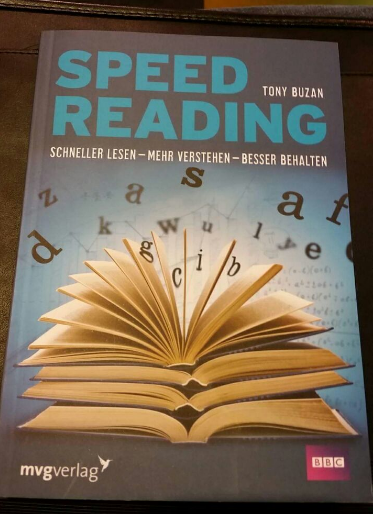Papa Rodin Reads - Speed Reading - Pt 1 Ch 1
Greetings, Steemians and Steemettes
](https://steemitimages.com/640x0/https://img.esteem.ws/jl24o918jw.png)
After having finished with the preamble, let's start with part 1 of this book!
Part 1 - Recognizing and developing your speed reading skills
 )
)
It is really amazing, isn't it?
And we aren't stopping there, we are also able to memorize the stuff we take in thanks to our magnificent brain.
I am not accustomed to the topic of mindmapping beyond the contents of this book. But I definitevly should be with how much reading I am intending to do.
The Author uses the opportunity to show us how he likes to visualizes information in the form of pictures to help him memorize and process data he takes in. He usually takes a thing, an object and creates a mind map around it. A common practise for people who are more accustomed to these.
In summary, the process of reading can be split into these steps:
- Recognizing - Being able to notice that the thing you are looking at is something you are familiar with. In this case, the alphabet, words and the likes.
- Assimilating - The process of getting the things you have recognized into your brain.
- Capturing - Being able to make something you can comprehend out of many blocks of the whole picture.
- Understanding - Putting the information you have learned into relation with your current knowledge and understanding to make sense of it.
- Memorizing Putting the learned information into storage for later use.
- Recalling Getting previously stored information out for actual use.
- Communicating Being able to actually use the information learned previously.
Students can probably relate to the feeling of futility one has after having read something only to find out that nothing stuck.
As one can see, he goes over the simple reading process and beyond that, which is good. Not a lot of people actually consider what to do after one has read something. This ends up leading to people quickly forgetting what they read.
The author suggest that one should reflect on which ones of these steps is considered problematic by the reader. Some of them can be fixed and the book will cover some methods for that later on.
Time for the first test!
I will now start to refer to the term "words per minute" as "wpm" from now on. It should make the upcoming posts a bit easier to read. And write.
In order to find out where we actually stand, it is only naturally understandable that we have to put our current skills to a test. Within the book, there is a short text that one has to read. It stretches a couple of pages and is used as an easy way to measure your current words per minute.
Afterwards, there will be a small test asking 15 questions in order to check how well one was able to comprehend the content.
Of course, I won't be able to provide you with either here. You can still test your reading speed by yourself.
A quick google search will give you plenty of pages that have programs and applications made in order to test your reading speed. If you prefer to actually use a book, you can use the method I do.
I count the words in the first couple lines of a book and take the average number of words per line. That number I multiply with the number of lines per page. If you have a book with very big passages between them or pictures, you will have to apply some more complicated math.
Or grab another book. That would probably be simpler.
One way or another, you will have a certain number of words per page on average. Start reading a chapter of that book and stop your time. Read it the way you usually would. After you have finished reading the passage of your choice, divide the number of words you have read with the number of minutes it took you.
Voila. You now know your current reading speed.
Oh, how the test ended for me you ask?
Tell me your reading speed in the comments below after you have finished the test yourself. I am very interested in how others have faired.
On the positive side of things, I ended up having a reading comprehension of 80%. Not all was lost!
](https://steemitimages.com/640x0/https://img.esteem.ws/lx0mbhaus0.png)
I think pink looks good on you.
That's flattering. Wanted to try out something new that I usually wouldn't. I like how it came out.
Yes, it looks good. Kind of a softer side of the Papa.